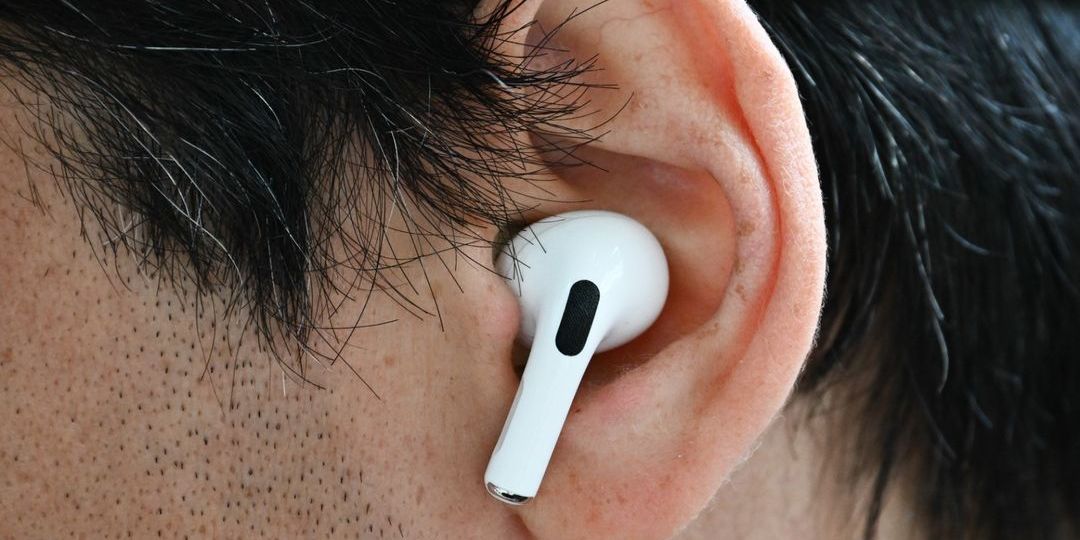
Apple has sold tens of millions of its AirPods since 2016, but social media posts claim the wireless earbuds emit harmful electromagnetic radiation. This is misleading; no evidence shows ill effects from the devices and emissions are below standards set by US regulators and international guidelines.
“Are you still wearing AirPods? These devices work by emitting and receiving radio frequency microwaves radiation, which can heat and damage your body’s tissues,” says the text accompanying a February 25, 2024 Instagram video with nearly 50,000 likes.
The narrator of a Facebook video suggests that radiation from the Bluetooth devices leads to “inflammation” at the cellular level. Similar claims have been shared for years on platforms including TikTok and X, formerly Twitter.

Claims of harmful emissions from electronic devices have circulated since 2015 when a group of international scientists signed a letter calling for more study and guidelines on the health effects of non-ionizing electromagnetic fields (EMF) which can come from electronic devices.
AirPods dominate the global market for such devices, according to analysts.
But the claims that they are harmful are misleading. Wireless devices such as AirPods must comply with regulations drafted by the Federal Communications Commission in coordination with other agencies including the Environmental Protection Agency, Food and Drug Administration, National Institute for Occupational Safety and Health and the Occupational Safety and Health Administration (archived here.)
These rules are based on the Specific Absorption Rate — a measure of the rate that radiation energy is absorbed by the body, the allowable limit of which is 1.6 watts per kilogram.
International standards are set by countries around the world for devices sold in those locations (archived here).
Safety margin
Jerrold Bushberg, a clinical professor of radiology at the University of California-Davis and former adviser to US and global agencies, said some 70 years of research on the biological effects of non-ionizing radiation — which comes from electronic devices as well as natural light sources — are not harmful at low levels.
“There’s already a pretty broad safety margin in the standard itself,” Bushberg told AFP in an interview February 28. “Safety standards aren’t set at the threshold between hazard and, and safety. They’re set in the case of RF (radio frequency) for public exposure 50 times below a level that might be harmful.”
While many electronic devices emit some non-ionizing radiation, a 2019 study found the levels from Bluetooth headsets were 10 to 400 times lower than from the cell phones to which they were connected.
Apple did not respond to an AFP query, but the company’s filings with the FCC are available online (archived here.)
The World Health Organization has acknowledged that “numerous electromagnetic field sources have become the focus of health concerns, including power lines, microwave ovens, computer and TV screens, security devices, radars and most recently mobile phones and their base stations.” But the agency said an extensive review of 30 years of research and 25,000 articles has found no credible evidence of harm to human health (archived here).
“Despite the feeling of some people that more research needs to be done, scientific knowledge in this area is now more extensive than for most chemicals,” the WHO said. “Based on a recent in-depth review of the scientific literature, the WHO concluded that current evidence does not confirm the existence of any health consequences from exposure to low level electromagnetic fields. However, some gaps in knowledge about biological effects exist and need further research.”
Bushberg said that scientists cannot give “an absolute blanket statement of safety about any physical or chemical agent,” but that “all science can really tell you is that based on everything we know today, and with the tools that we have to evaluate the science, that we’re confident that there really is no risk or that any risk is very, very small and below a level that can be detected.”
AFP has fact-checked other claims about Apple here.
